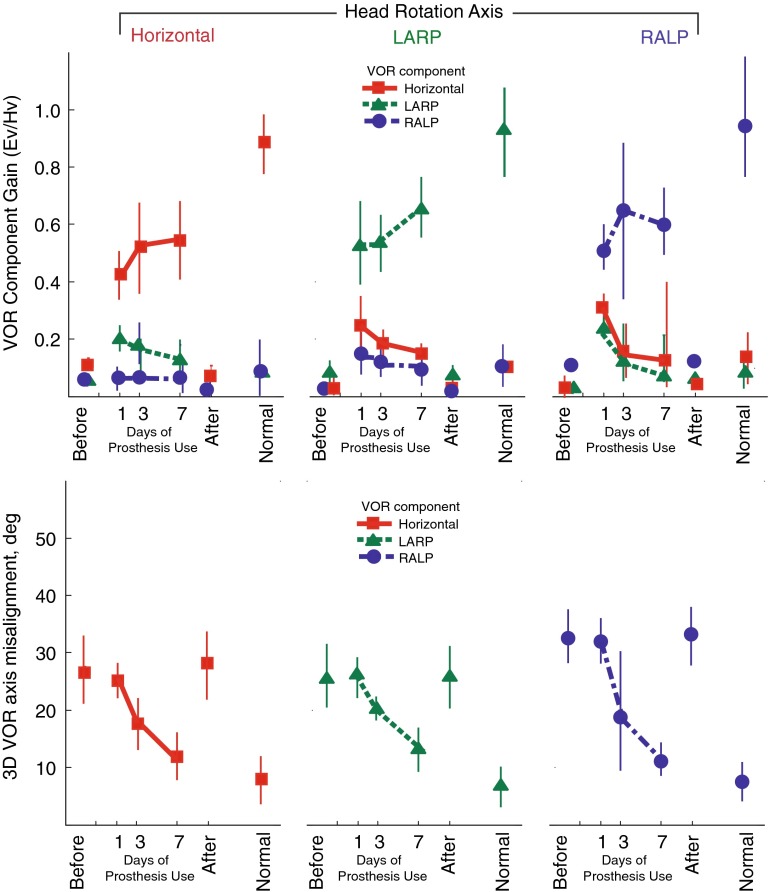FIG. 5.
Mean ± SD gain (top) and eye/head 3D axis misalignment angle (bottom) for N = 4 rhesus monkeys, displayed for each component of the peak 3D VOR eye movement response during 50 °/s peak whole-body rotations in darkness at 1 Hz about the horizontal, LARP, and RALP canal axes on the first, third, and seventh days of continuous stimulation using a head-mounted multichannel vestibular prosthesis. The 3D VOR response maintained gain of the desired component while improving directional misalignment over 7 days of continuous prosthesis for every stimulus frequency, axis, and animal examined. Before: values measured to head movement with the prosthesis stimulating at constant pulse rates, independent of head velocity, 3–5 h after prosthesis activation. After: values measured 4–48 h after the prosthesis was powered off on day 7. Normal: Responses of five normal rhesus monkeys. Ev eye velocity; Hv head velocity.

